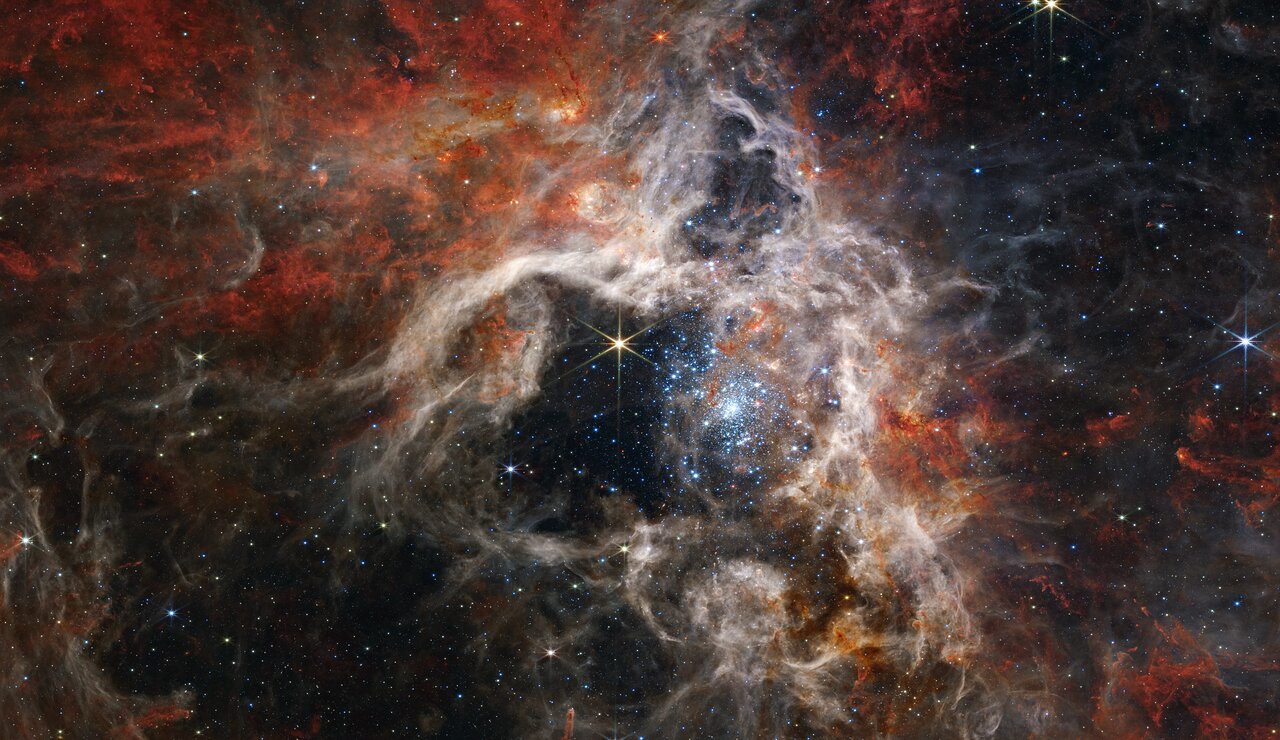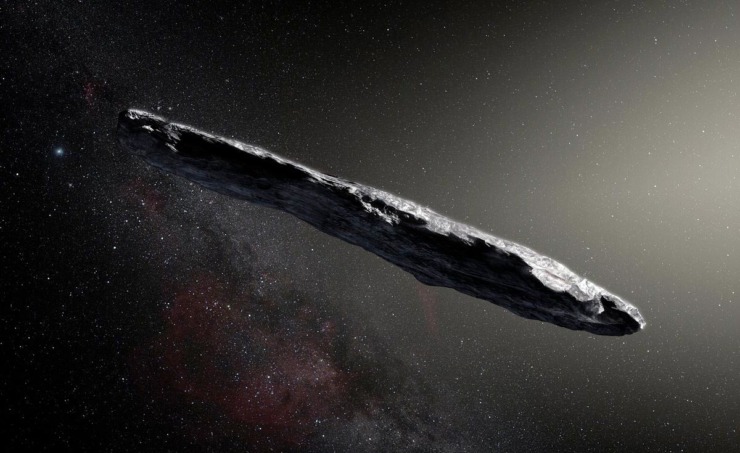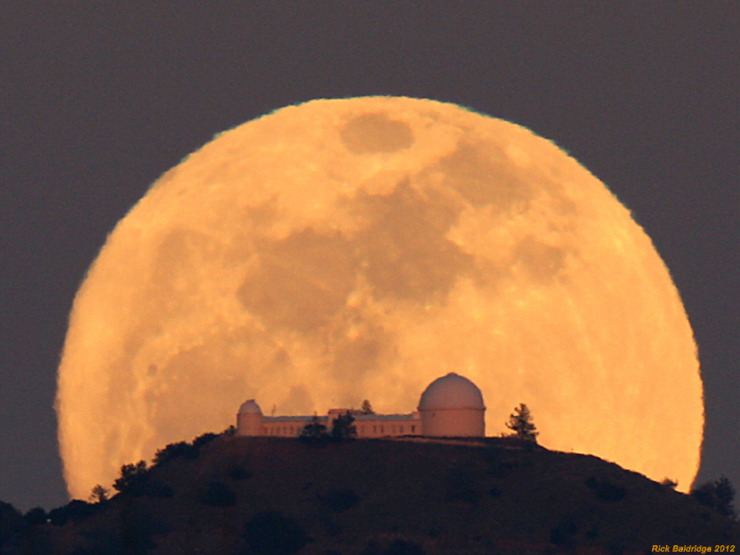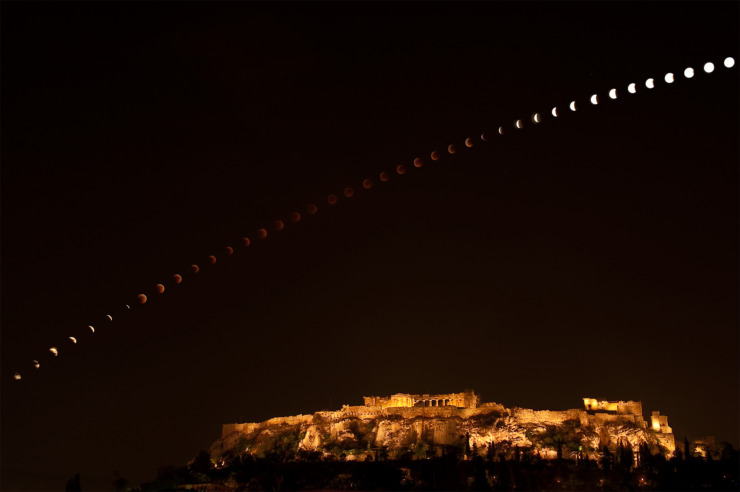Astronomers working with the James Webb Space Telescope recently unveiled a beautiful new image of one of the largest and most impressive regions of star formation known — the Tarantula Nebula (sometimes also called the 30 Doradus nebula after an old catalog designation.) In visible-light images, the nebula’s shape somewhat resembles the legs of a giant tarantula.
This spectacular infrared image is actually a mosaic constructed of a number of individual views — together they show over 340 light-years of the nebula, whose total extent is estimated to be 1000 light-years across. (That’s one of the biggest such regions astronomers have ever found.) Remarkably, the Tarantula is not even in our own galaxy, it resides in the satellite galaxy called The Large Magellanic Cloud, some 160,000 LY away! Yet it is so bright it sparkles in this image.
Astronomers have estimated that if this giant nebula were at the distance of the more familiar Orion Nebula (one of the closest nebulae in our own galaxy) it would be so bright in the sky, it would cast visible shadows at night!
Since such clouds of cosmic raw material (gas and dust) are densest in the middle, that’s where stars begin forming. When a good-sized group of hot, young, energetic stars has started in the middle, their energy blasts a cavity in the cloud. We see that cavity clearly on this image, plus the brilliant cluster of young stars in the cavity, colored blue in this infrared image.
If you look at the bright yellow star in the center of the cavity, with its distinctive spikes (these are an artifact caused by too much light hitting the structural parts of the telescope), you can follow the top spike to a new bubble in the midst of the gas and dust. That’s a fresh group of adolescent stars, starting to make their own cavity.
As in previous James Webb images, astronomer immediately see the advantage of using infrared. The dusty nebula blocks much of the visible light from stars (much as the smog in Los Angeles blocks the light from distant parts of the city.) But in this infrared view, thousands of stars never before seen have become visible and can be studied.
The rust-colored material in the outer parts of the image is cooler gas, made up of molecules with hydrogen and carbon in them. Molecules like this from the nebula become part of the next generation of stars and planets. It is just such molecules that were the precursors of life on our planet. Their abundance in the Tarantula shows astronomers that the ingredients of life as we know it are scattered throughout the cosmos.
Quite separate from the science, isn’t the image of this “star nursery” just beautiful? To see the image larger and in different sizes, go to: https://esawebb.org/images/weic2212a/




